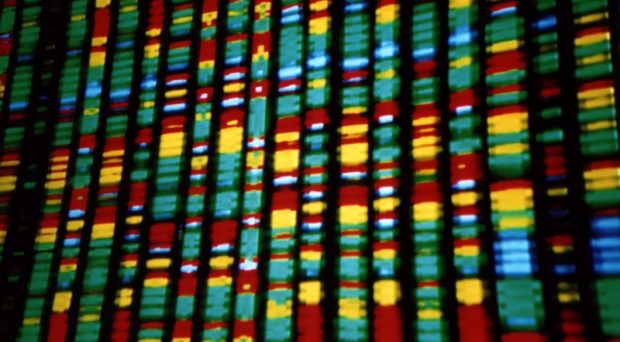
A role for genetics in obesity
Childhood obesity is a major public health issue worldwide. It is associated with later life health outcomes such as cardiovascular disease and type 2 diabetes. Rightly so, there is a lot of attention for the role of lifestyle in the development and prevention of childhood obesity. Poor nutrition and limited physical activity are well-known risk factors for developing obesity.
In addition, we are finding out more and more about the genetic background of obesity. In the general population, the genetic risk of obesity is likely determined by the combination of many genetic variants, each with a small effect. Each of us has some variants associated with increased risk, as well as others associated with decreased risk. All put together, and in combination with factors such as lifestyle, they underlie our risk of becoming obese.
Identifying genetic variants in children and adults
Obesity is measured by body mass index (BMI), which is calculated from an individual’s body weight divided by his or her height-squared. Last year, a massive study in over 300,000 adults identified 97 genetic variants that were associated with BMI.
In children, such huge numbers of study participants are not available. The largest study in children to date identified 15 genetic variants associated with BMI from a study population of 45,000 children. Many of these variants overlapped with those found in adults. The fact that there was not a complete overlap may indicate that the genetic processes underlying BMI in children and adults may differ somewhat. These differences may be due to actual distinct underlying biological processes, but it is more likely that some variants may have stronger effects in early life, whereas others may play a stronger role later in life.
In our new study published in BMC Genetics, we used a statistical approach to combine the 97 genetic variants found in adults into one genetic risk score and we did the same for the 15 variants found in children. We studied whether these risk scores were associated with BMI in 6-year old children.
Beyond BMI, there are other, more detailed ways of measuring adiposity in children, for example to look at growth or body fat distribution. Understanding the genetic background of these more detailed physical features may help us understand the ways in which genetic variants may cause obesity.
For that reason, we also studied if the genetic risk scores were associated with growth in infancy and with body fat distribution in childhood. We measured body fat distribution in three ways. Our first approach was to measure the total fat mass as a percentage of the total body weight. Second, we measured android fat, which is fat around the abdominal region, and gynoid fat, which is fat around the hips, and used the ratio of the two to describe fat distribution. And third, we measured the fat around the abdominal organs using ultrasound.
Shared genetic factors in early and later life adiposity
We obtained this data from almost 4,000 children from the Generation R Study, a population-based study of pregnant women and their children in the Netherlands. We found that both the adult and the childhood risk scores generated from the BMI-associated variants could be linked to measures of infant growth and that they were both very strongly associated with BMI, total fat mass, and fat distribution in childhood.
In addition we found that risk scores based on smaller groups of genetic variants with specific biological functions, such as processes in the central nervous system, also influence body fat development from early life onwards. This means that the genetic background and the specific pathways involved in adult and childhood adiposity at least partly overlap.
Ultimately, understanding the biological processes that underlie early development of overweight and obesity will help us to find more targeted prevention opportunities to decrease the burden of this important individual and public health disease.
Comments